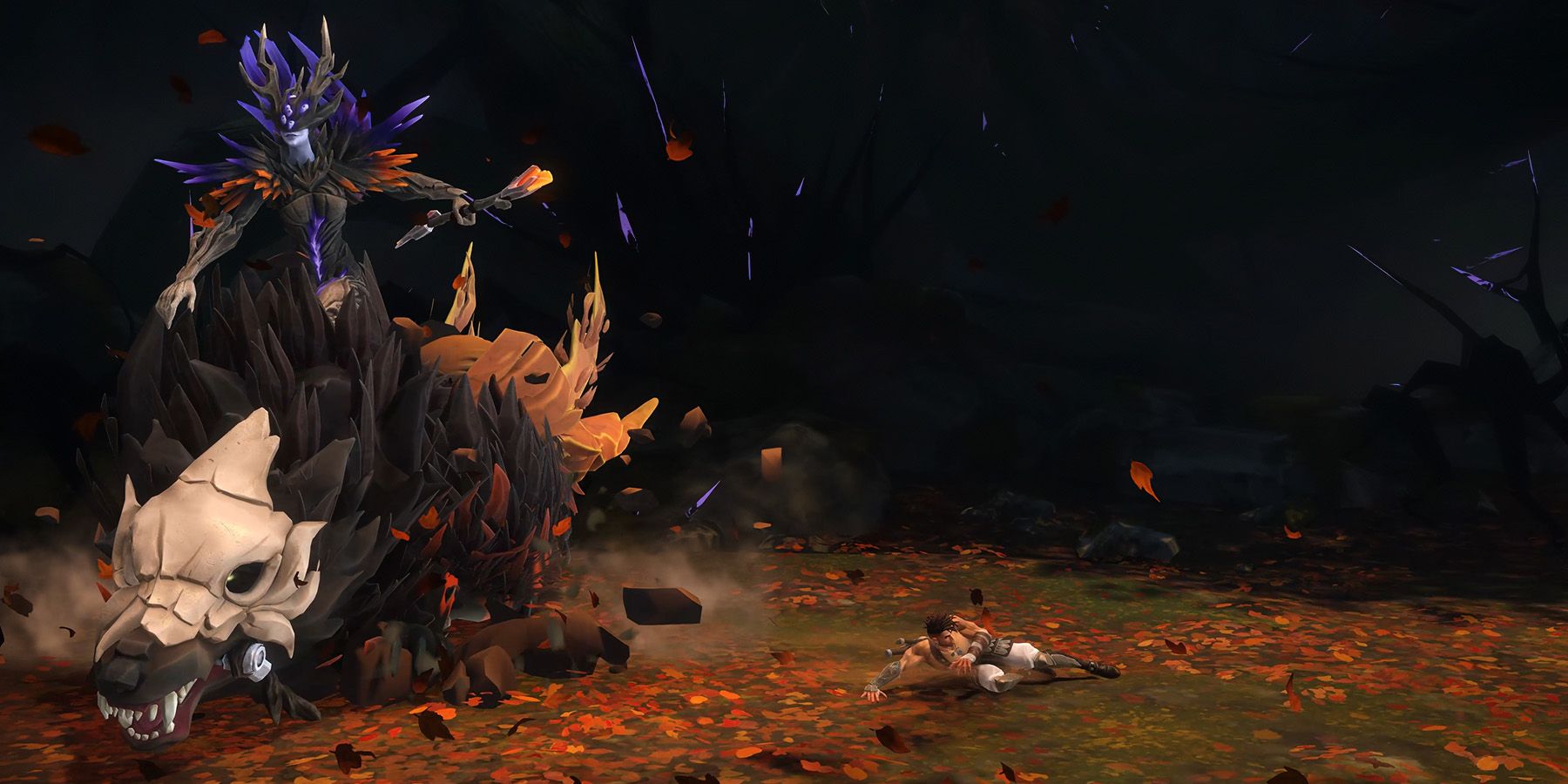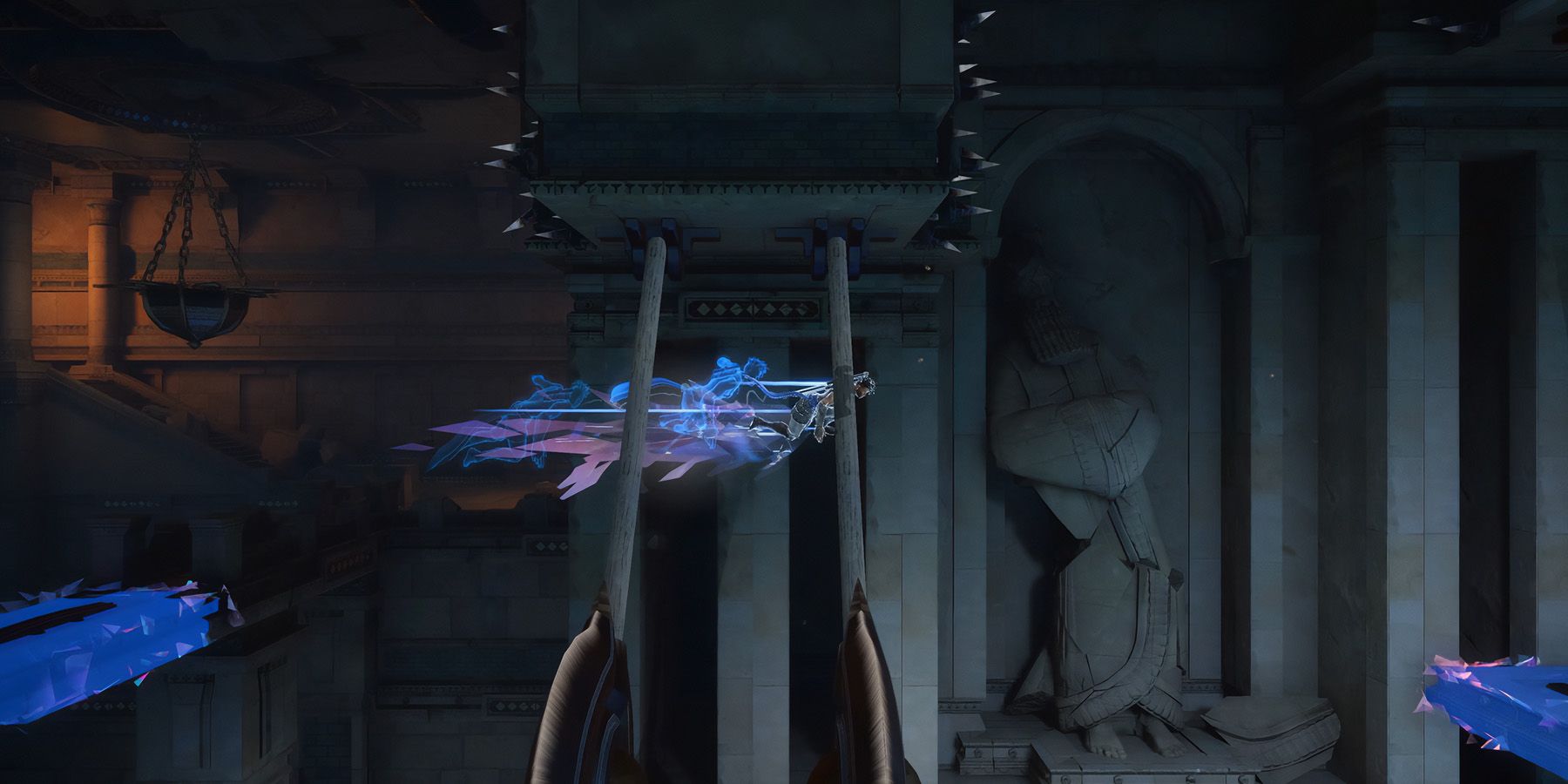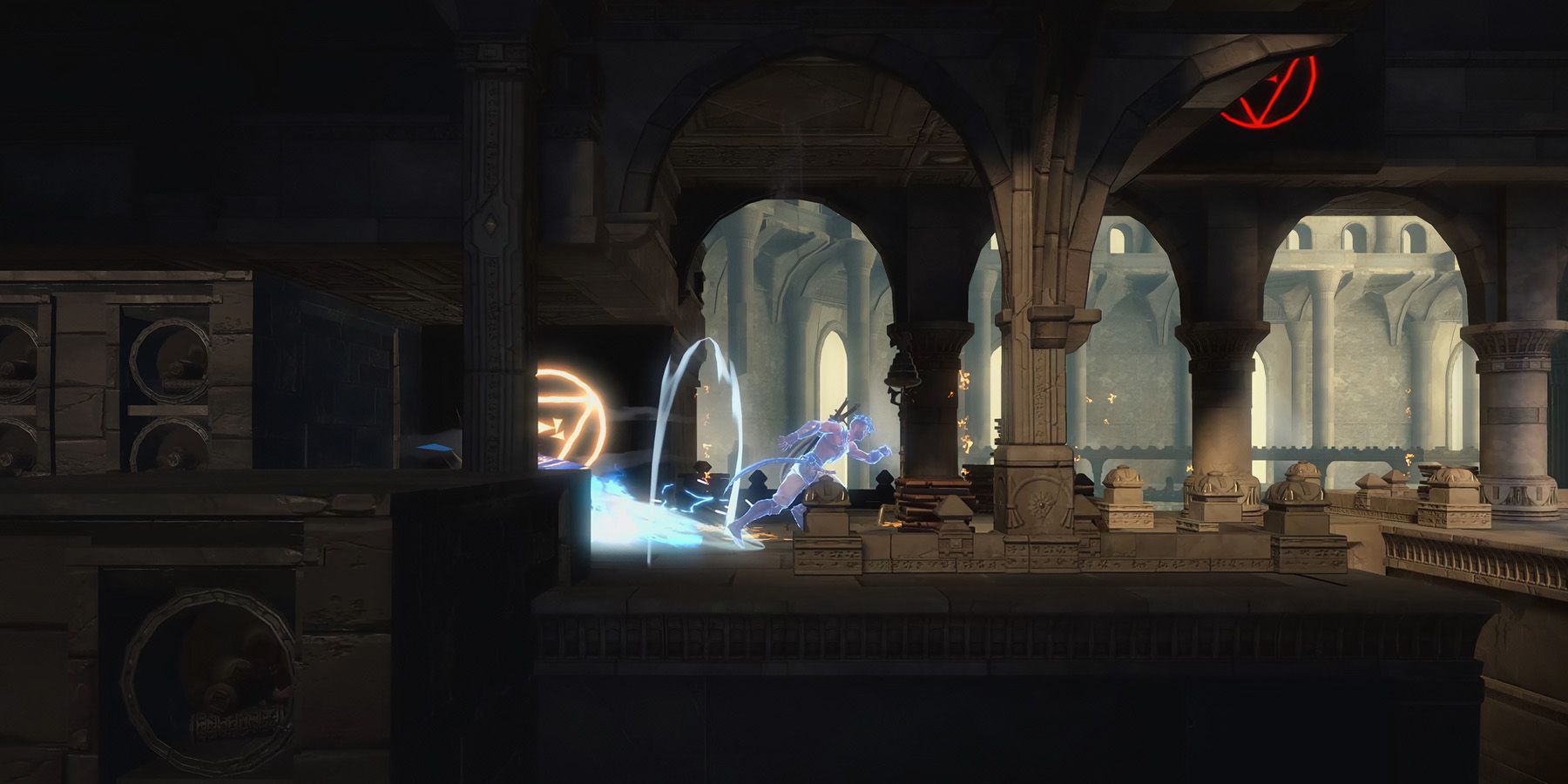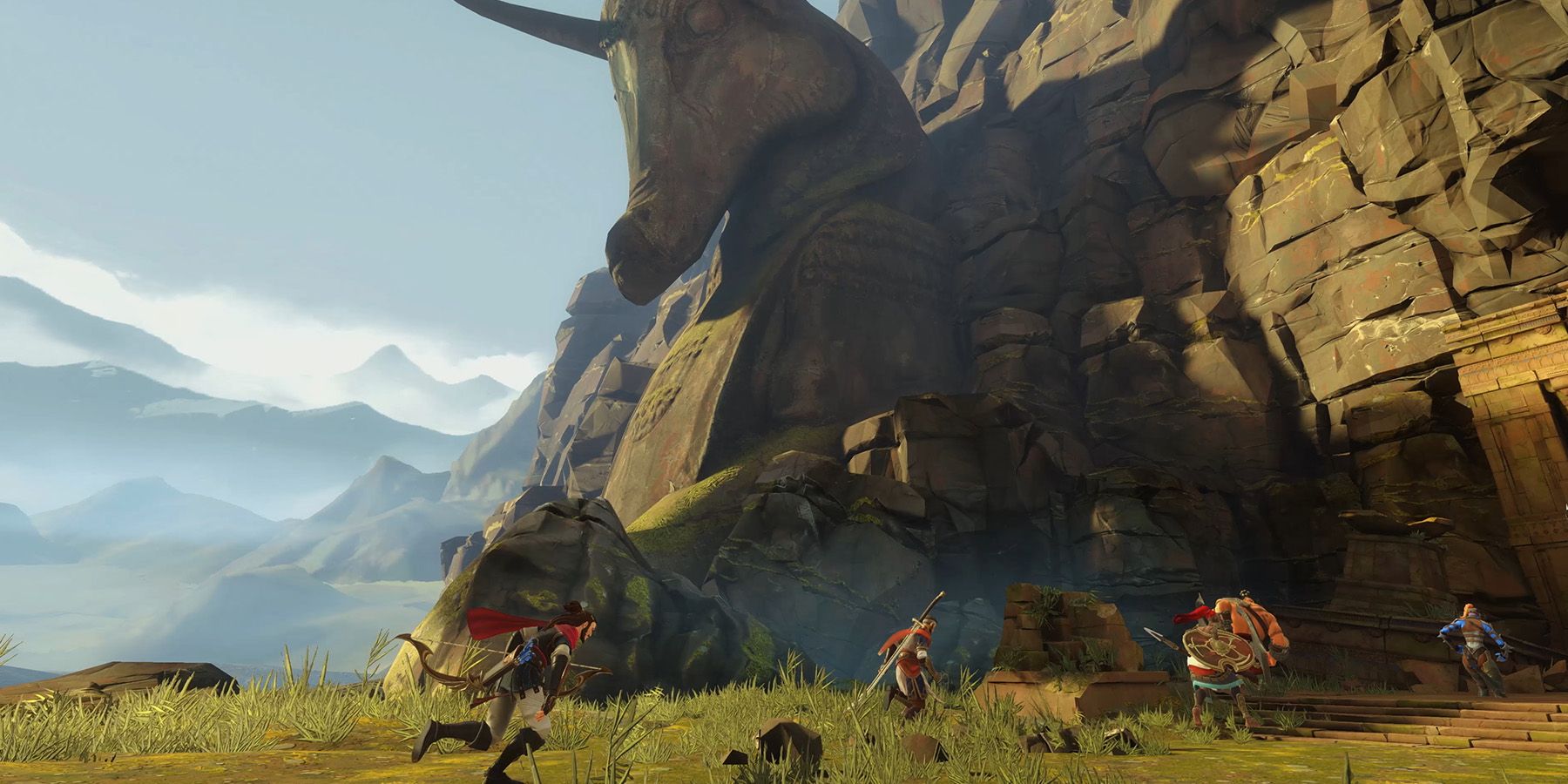2024 is kicking off with the long-awaited return of a beloved franchise as Prince of Persia: The Lost Crown releases later this month. 14 years since the franchise’s last entry, The Lost Crown is harkening back to the series’ sidescroller roots while introducing more open-world Metroidvania exploration and progression elements, and it truly feels like a natural evolution of the series.
Game Rant spoke with Prince of Persia: The Lost Crown senior producer Abdelhak Elguess and game director Mounir Radi about the team’s approach to the new Metroidvania gameplay. They revealed how the team hopes to iron out some of the shortcomings of the Metroidvania genre, how the progression system encourages exploration, and how players will use Sargon’s growing arsenal to tackle the game’s combat and puzzles. This interview has been edited for brevity and clarity.
Prince of Persia: The Lost Crown Hands-On Preview
Game Rant’s three-and-a-half-hour preview of the upcoming Prince of Persia metroidvania showed fun exploration, tough bosses, and clever puzzles.
Q: Prince of Persia: The Lost Crown is one of the earliest marquee releases of 2024. How does it feel to have the title positioned as a kick-off to what’s already shaping up to be another great year for video games?
Elguess: We are very excited to open the year… The game is of high quality, so I believe it is good news for players to start with the challenges of Prince of Persia: The Lost Crown.
Radi: We are obviously very proud to pave the way for a new year that will certainly be very rich ludically, and which marks the return of the Prince of Persa brand after 13 long years of absence.
Q: In terms of Metroidvanias, what were some of the team’s biggest genre inspirations in the design of Prince of Persia: The Lost Crown?
Elguess: The first inspirations for the game are Prince of Persia 1989 and Prince of Persia: The Sands of Time. In terms of influence on the structure, there are many, like Castlevania and Metroid.
Radi: From the moment we decided to make a Metroidvania, we played and replayed HUGE titles of the genre; in particular to identify those who were most successful in exposing their gating loop. Among these titles, it is certain that titles like Super Metroid, Hollow Knight, and Castlevania: Symphony of the Night stand out. But to the extent that Prince of Persia: The Lost Crown offers its own mechanics, we were mostly interested in the weaknesses of the genre and the things we could evolve. This is what led to the Memory Shards feature for example, allowing you to pin a screenshot to the map to easily remember the blockers or hints you stumbled across earlier in the game.
Q: What drove the decision to make The Lost Crown a full-blown Metroidvania rather than a linear action-platformer akin to the series’ origins?
Elguess: There has been this desire for a long time. Metroidvania allows us to truly bring together the essence of what a Prince of Persia is. It is possible to do combat, platforming, and puzzles at a very high level. And as in Prince of Persia, immersion in a world is central, the possibility of exploring and traveling freely in various biomes seemed central to us and respectful of the freedom that we wanted to give to the players.
Radi: In view of the evolution of the series and the different forms it borrowed, we wanted to be sure to recapture its essence, and it is quite naturally that we turned to the very first Prince of Persia, the one from 1989, for which we had a lot of memories of players.
At the time, it was already a question of navigating in a dungeon with deadly dangers in which it was essential to memorize the position of enemies and traps to be able to complete the adventure in the given time. It is this feeling of isolation, autonomy but also constant reflection around the architecture of the places that reinforced in us the idea that we should embrace the genre of Metroidvania!
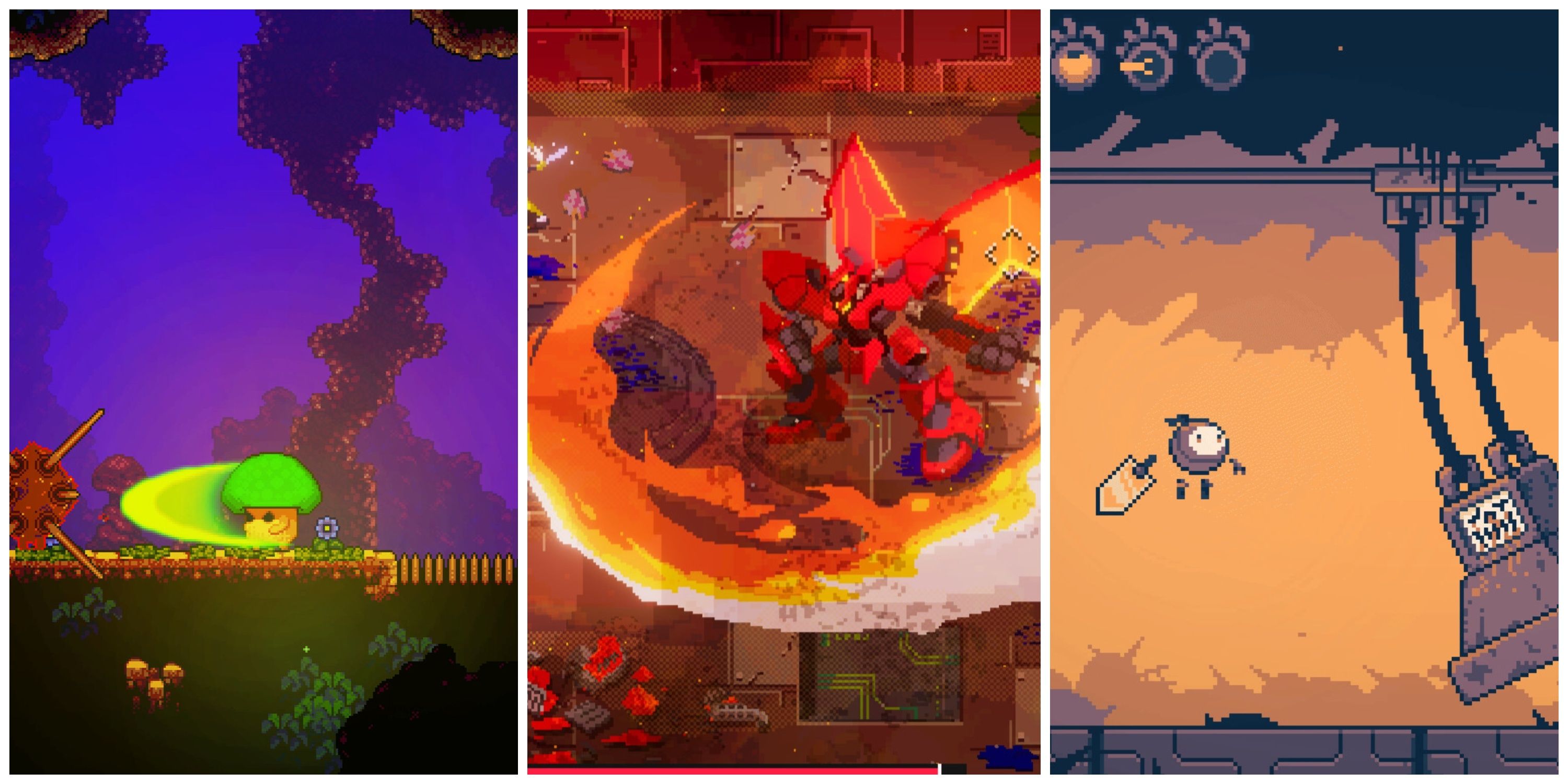
Best Indie Metroidvania Games
These metroidvania games made by indie developers are a great way to experience the genre at its best.
Q: Would the team classify The Lost Crown as a Soulsvania such as Hollow Knight or Blasphemous or is it more of a traditional Metroidvania experience?
Radi: Hmmm… None of the above haha. The Lost Crown, like all its predecessors, is first and foremost an Action-Adventure game that uses the Metroidvania codes to elevate its formula. This is a genre that tends to highlight a world structure, governed by a mechanical progression (a world gated by abilities). And we truly believe that Metroidvania cannot summarize by itself all the legacy of the Prince of Persia series. So the best way to classify Lost Crown would be “it’s a Prince of Persia game!”
When working on a series like Prince of Persia, it’s important to start with the pillars. The Prince of Persia games are action-adventure games for me, offering a clever balance between narration, action, platforming, and puzzles, and the same goes for Prince of Persia: The Lost Crown. The game is inspired by the Metroidvania genre, but the term in itself is above all representative of the structure of the world and the rules allowing the player to evolve in it. It cannot contain by itself all that the Prince of Persia series represents, but it can certainly raise it.
Q: Were there any specific Metroidvania elements/features that the team definitely wanted to include or outright avoid with The Lost Crown?
Radi: There are necessary elements of the genre such as the addition of a map so that the player can organize his exploration. Or the progression loop itself which is to explore the world to find special abilities that will allow players to access new places, although honestly, I think these elements can evolve in the future to make the genre evolve. What we absolutely wanted to avoid were things like imposing enemies as topological obstacles (hit on contact) because it would make no sense with what we wanted to achieve in terms of the combat system. Or losing resources to death that should be recovered somehow. We seek to minimize the elements of friction not necessary for the experiment.
Q: In terms of overall size, how does The Lost Crown’s map compare to other modern Metroidvania titles?
Radi: The size of the map and the variety of associated biomes do not have to blush compared to the competition. I will let you discover all this by yourself in the final game of course!
Q: Could you talk us through the progression systems in the game, as well as how backtracking a la Metroidvania works exactly?
Radi: The progression system is based on two pillars: the first which is also the most important for the genre is exploration. To become stronger, Sargon will have to explore Mount Qaf from top to bottom, whether to find new abilities that will unlock new paths, but also to acquire amulets, Athra Surges (special attacks) or resources to upgrade his equipment.
The second is experimentation: all the elements of the Sargon toolset have been designed to combine and promote experimentation. It is a horizontal approach to progression where the addition of a new tool is not intended to exclude another, but rather to push the player to make decisions to characterize his build.
As for the management of backtracking, it should be noted that during its exploration, the player is exposed to inaccessible routes often appearing as landmarks to stimulate his memory. They also have a special icon on the map, like a map of an amusement park. At the beginning of the adventure, we use the presence of some NPCs to educate the player and help him recognize inaccessible paths. Later, these landmarks are exposed more subtly so as not to break the player’s agency and that he is the master of his destiny.
When the player recovers a new ability, he is immediately exposed to a learning workshop highlighting blockers similar to those he met previously. And this is where magic is supposed to work! The memory is activated, the player can then open his map, and try to define a route between the fast travel closest to his position, to the one closest to the door he wants to bypass.
Q: Are there any systems that encourage replaying the game? For example, harder difficulties or hardcore challenges?
Radi: The presence of four difficulty modes as well as the ability to customize the parameters such as the health and the damage of enemies, parry windows, or the evolution of the gauge of Athra in combat, are all ways to dive back into the adventure with new challenges.
There is also obviously the very nature of the progression system that will allow players to try other builds of amulets and powers.
Q: The preview build of Prince of Persia: The Lost Crown showcased some excellent boss fights with multiple phases against foes both large and small. What can players expect as far as spectacle goes, and how did Ubisoft land on this type of presentation with some of the flair around boss fights?
Radi: One of the things we wanted to achieve the most was to feel that the more Sargon absorbs the Simurgh’s powers, the closer he gets to a superhero or a demigod. To deal with this, we made sure that every encounter against the bosses was the promise of an ever more impressive show, until the end of the game. Realization-wise, it means that, like in a shonen anime where a new arc is the promise of pushing the boundaries of your hero’s powers, the boss fights in The Lost Crown progressively become more impressive, in their context, their choreography, their animations, and VFX…like in the Dragon Ball series, for example!
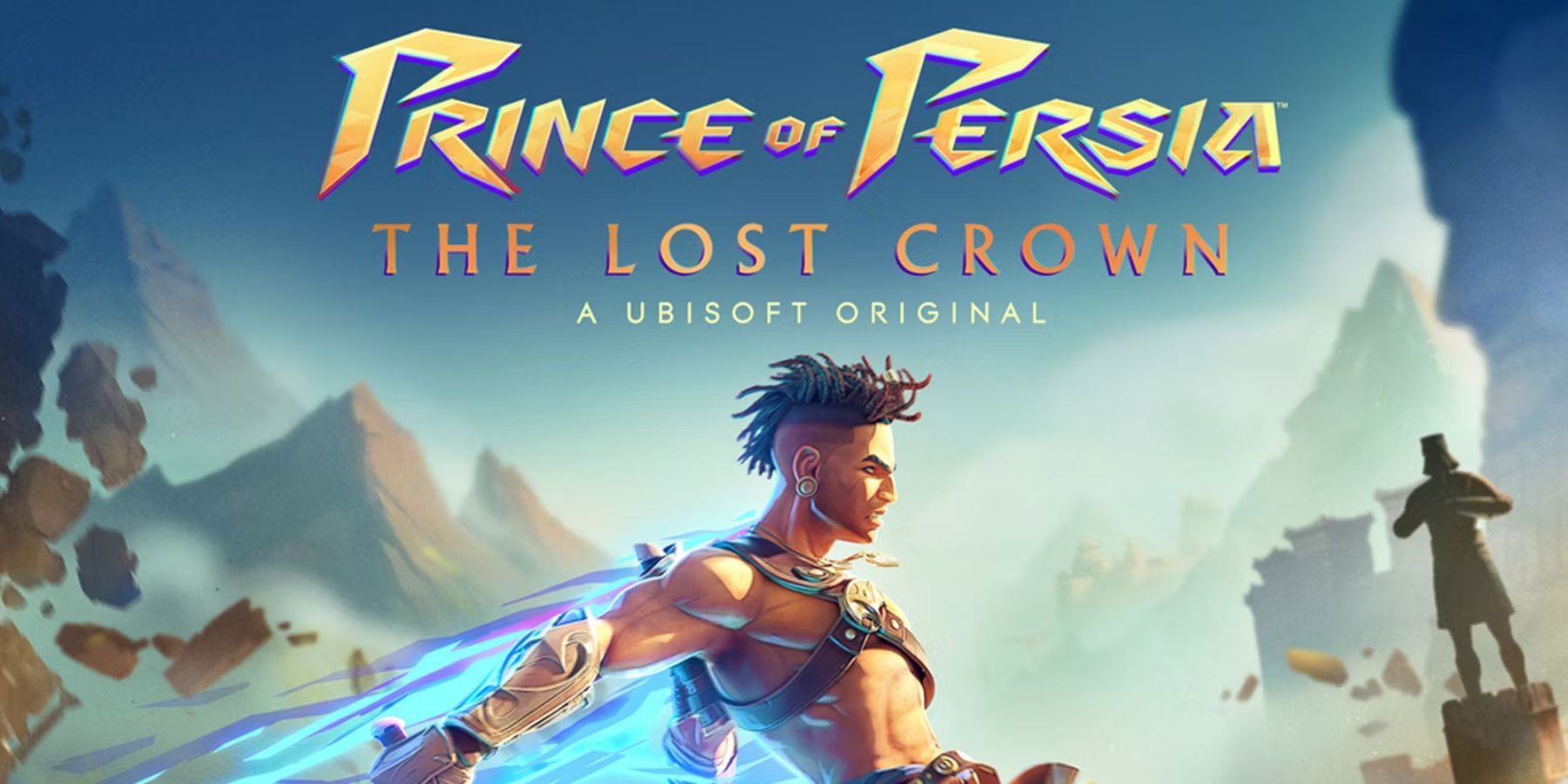
Prince of Persia: The Lost Crown Feels Right at Home in a 2D Platformer
A brand new Prince of Persia game was revealed during Summer Games Fest, and it brings a welcome new spin to the gameplay of this long running series.
Q: The time travel mechanic looks very fun to use. How did you approach designing encounters with such a potentially complex ability in mind?
Radi: This mechanic is indeed an important part of Sargon’s arsenal. It allows thim o move in the back of an enemy in a fraction of a second to position itself facing a weak point or to circumvent a shield, avoid very precise and fast projectiles at the time they are fired, or deviate in an instant from a very wide AOE. Apart from a few enemies and especially some bosses requiring its use, this skill can be freely exploited by players to create original and devastating combinations. This is an approach we have applied to all powers so that players can try different approaches in combat, some of them simply being more effective!
Q: Players have a wide variety of abilities and can execute some pretty intricate combos. Difficulty-wise, will players need to skillfully use every tool in most fights, or can they get by on a playstyle that involves just a few favorite abilities?
Radi: I answered that question in a way in my previous answer. Some enemies require the player to use certain skills or invalidate certain strategies so that the player seeks bypasses and leaves his comfort zone. Apart from bosses and some very specific enemies whose role is to validate or reinforce the use of an ability, we never require the use of a specific skill or strategy. Of course, using the entire arsenal of Sargon gives certain advantages in combat.
Q: Could you talk more about the game’s semi-open world approach and how much freedom players will have to explore its different biomes?
Radi: I would really need whole pages to explain our approach to world-building! I will simply say here that we have built this world so that getting lost is each time the promise of a new adventure or a significant reward.
At the beginning of the adventure, you will notice that although you have many open roads, they close fairly quickly or bounce back to the main path to guide the player to certain points of interest, and notably some remarkable obstacles giving the illusion of an open world. Once the player is educated in the progression loop, he is then dropped in the big bath and must then, just like Sargon, decide for himself his next destination. During this free exploration where the player can acquire certain powers in a different order, gradually reconnect this world via shortcut games, or sink into optional areas full of surprise, he writes his personal story and will realize by sharing his story that it is totally different from that of other players.
Q: Could you discuss how equipping different amulets impacts the overall gameplay and player choice in terms of playstyle?
Radi: Amulets, like the rest of Sargon’s skills, are a toolbox designed both to meet certain challenges (“Oh look, a nail! It would be nice to have a hammer here!”) as well as to meet their usual preference or curiosity (“Oh look, a nail, I wonder if I can push it in with a good kick?”). That’s pretty much the approach we had with amulets haha.
In other words, amulets were designed to invite the player to experiment with combinatorics. Some are very logical and favor a specific playstyle (aimed in slow-motion + multiple shots + fire arrow = what you imagine) and others are more inventive and surprising! Once again, there is no question of imposing the use of certain amulets for a specific challenge. We allow the player to use any strategy, although some are better suited than others.
Q: In the 2007 Prince of Persia Classic, players had to beat the clock itself with one hour of gameplay time to rescue the princess. Will The Lost Crown feature any similar realistic, time-focused elements in addition to time powers?
Radi: There are indeed demanding challenges for the player that he performs certain combinations of actions, sometimes quite surprising, in a limited time. However, the framework is more short-term because we wanted to remove friction in case of failure. Nevertheless, the theme of time is once again at the heart of the adventure, which will reserve you nice surprises!
[END]
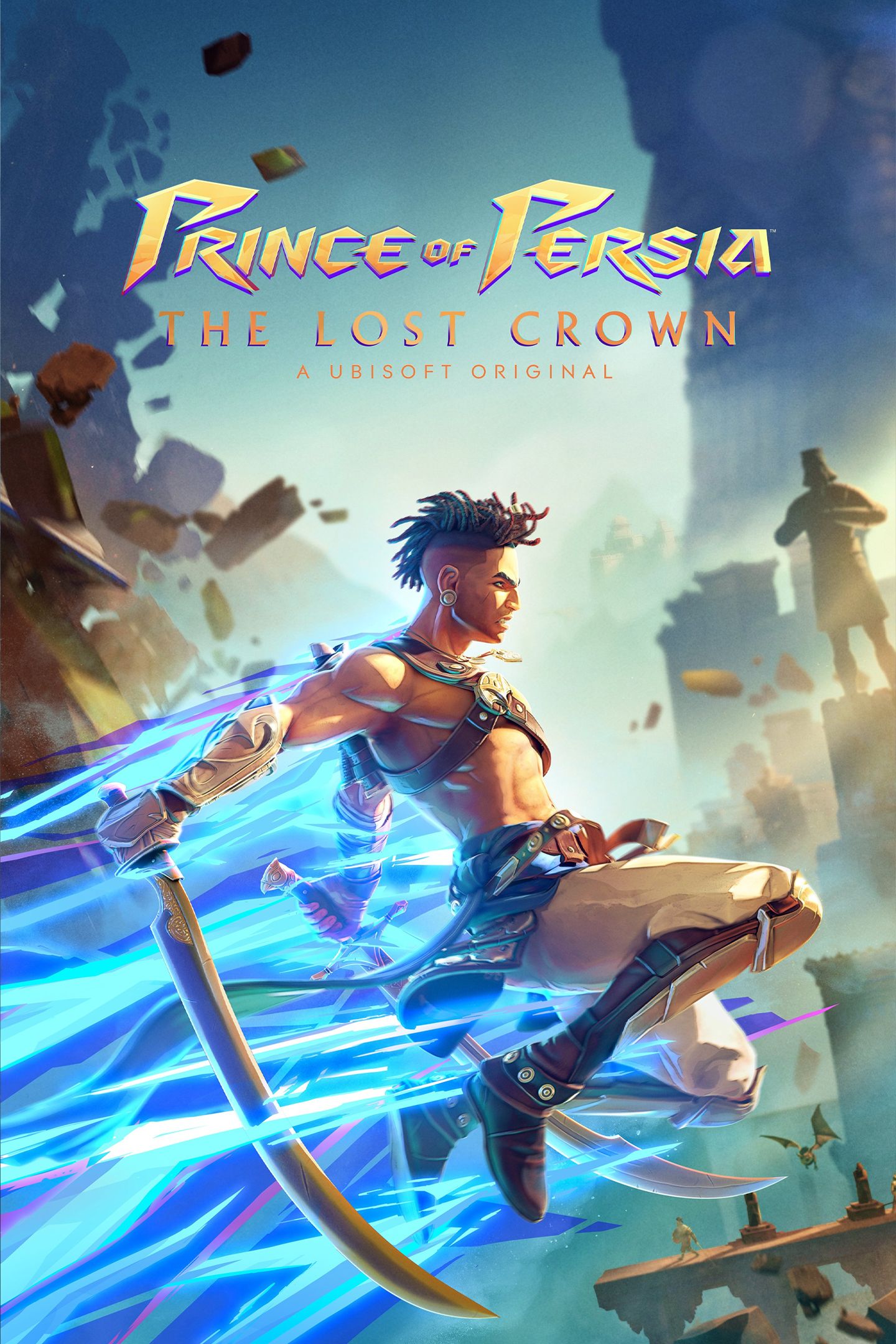
Prince of Persia: The Lost Crown
Ubisoft’s The Prince of Persia: The Lost Crown is a throwback to the franchise’s early 2D days, albeit with a heavy focus on stylish combat. Inspired by Persian mythology and set on Mount Qaf, the game features platforming, parkour, action, and storytelling.
- Released
- January 18, 2024
- Developer(s)
- Ubisoft Montpellier
- Genre(s)
- Action , Platformer , 2D
